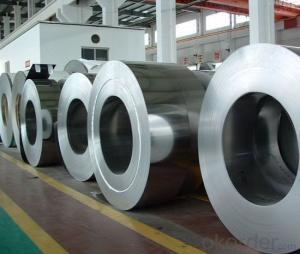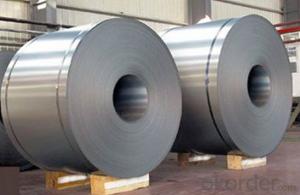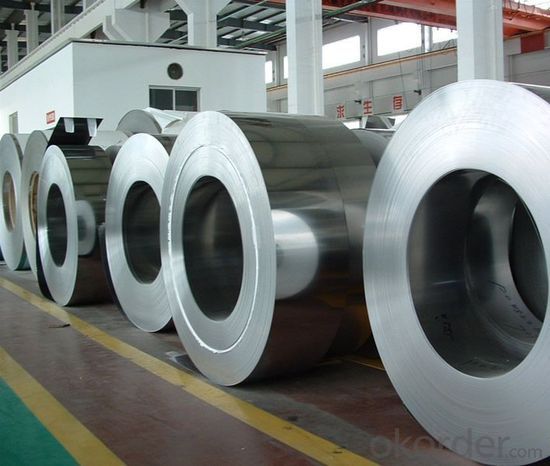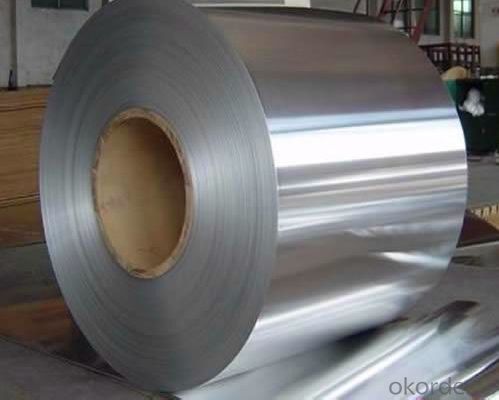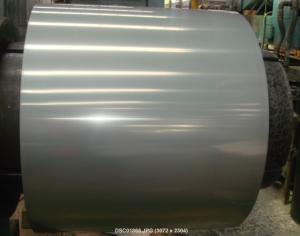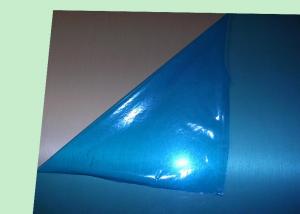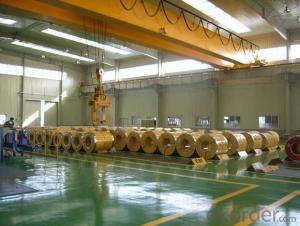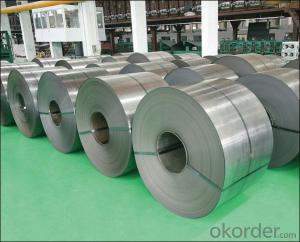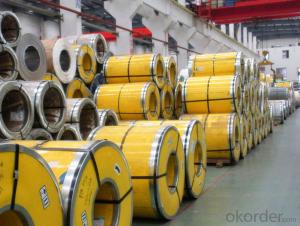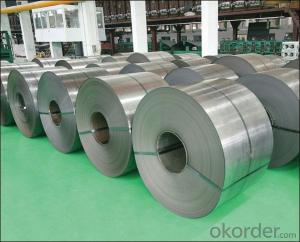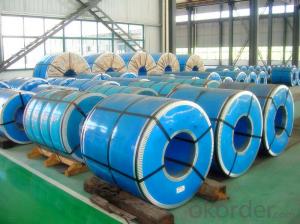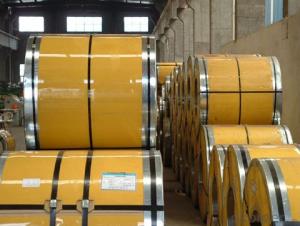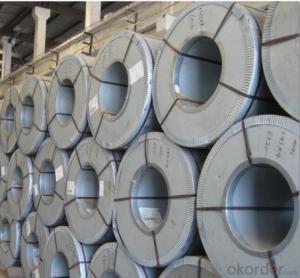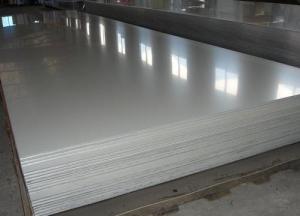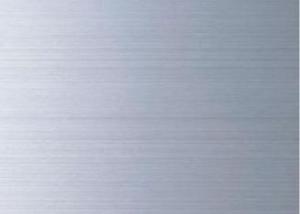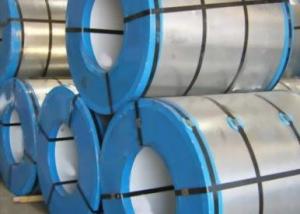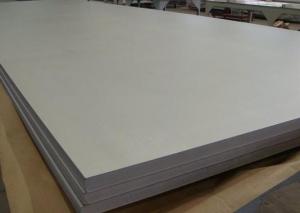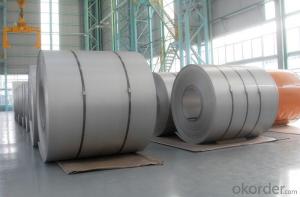Stainless Steel Coil 201 Hot Rolled Narrow Coil J4
- Loading Port:
- Lianyungang
- Payment Terms:
- TT OR LC
- Min Order Qty:
- 500 m.t.
- Supply Capability:
- 8000 m.t./month
OKorder Service Pledge
OKorder Financial Service
You Might Also Like
Hot Rolled Stainless Steel Coil
201 Narrow/Wide Strip No.1 Finish
Packaging Detail: For customer's requirement
Delivery Detail: 10-30days
201 Hot Rolled Stainless Steel Coil Specifications
THK:2.3/2.5/3.0/4.0mm
Width:485/510/550/610/1010/1240mm
Face:No.1
201 Hot rolled stainless steel Coil Application
Stainless steel is a production which not easy rust,acid resistance and corrosion resistance,so it is widely
used in light industry,heavy industry,daily necessities and the decoration industry.
201 Hot Stainless Steel Coil Chemical Composition(WT%)
(C):≤0.15, (Si):≤0.75, (Mn):5.5~7.50, (Cr):16.0~18.0, (N):≤0.25, (Ni):3.50~5.50, (P):≤0.060, (S):≤0.030
201 Hot Rolled Stainless Steel Coil
Strength Of Extension:100,000 To 180,000 Psi;
Yield Strength:50,000 To 150,000 Psi
Elongation :55 To 60%;
Modulus Of Elasticity:29,000,000 Psi;
Density :.280lbs/Cubic Inch(7.93g/Cm3)
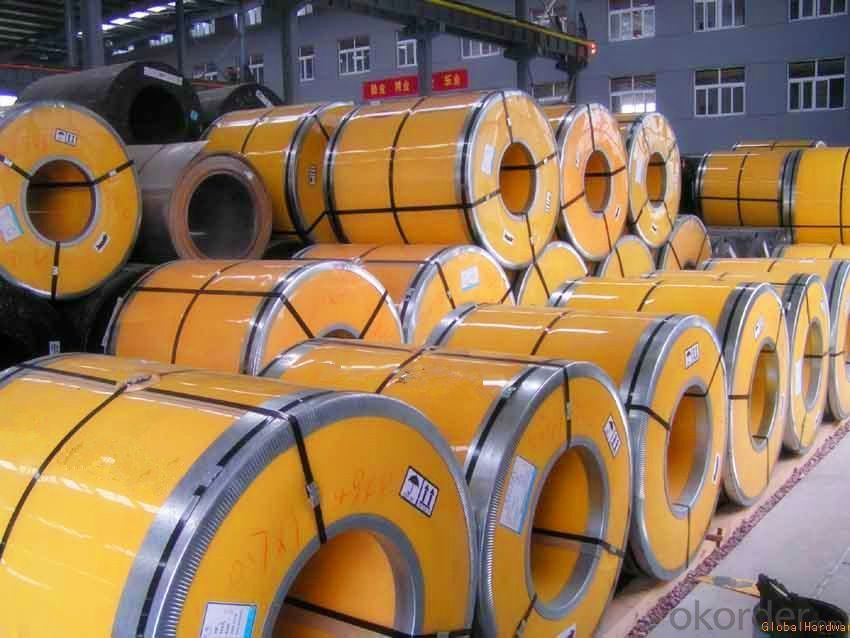
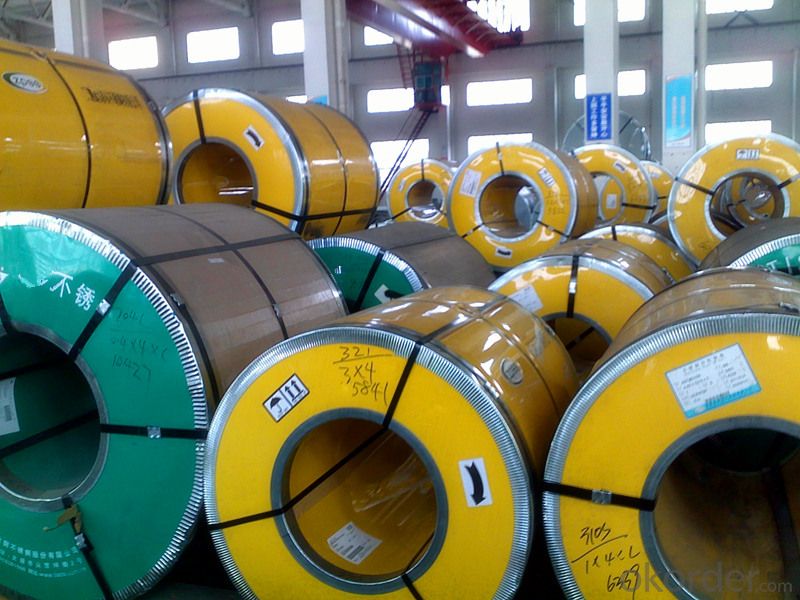
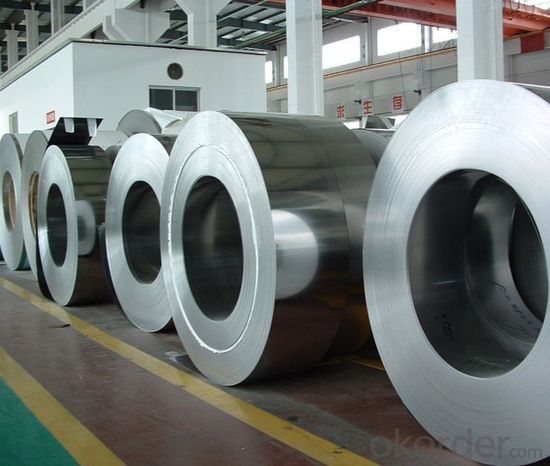
- Q: What are the applications of stainless steel strips?
- Due to their outstanding properties, stainless steel strips find wide-ranging applications across various industries. They are commonly used in construction and architecture for structural components, roofing, cladding, and facades. Their exceptional durability, corrosion resistance, and aesthetic appeal make them an ideal choice in architectural projects. In the automotive industry, stainless steel strips are utilized for manufacturing exhaust systems, trim components, and decorative parts. Their high strength, heat resistance, and corrosion resistance make them suitable for these purposes. Stainless steel strips are extensively employed in the production of kitchen appliances such as refrigerators, ovens, dishwashers, and sinks. Their hygienic properties, resistance to stains and corrosion, and ease of cleaning make them a popular choice in the kitchen. In the medical field, stainless steel strips are used for manufacturing surgical instruments, implants, and medical devices. Their biocompatibility, resistance to sterilization processes, and corrosion resistance make them suitable for use in healthcare settings. The petrochemical industry relies on stainless steel strips for manufacturing equipment like storage tanks, pipelines, and valves. The corrosion resistance of stainless steel strips is crucial in ensuring the safety and reliability of these critical components. The electronics and electrical industry also utilizes stainless steel strips in electronic devices, electrical contacts, connectors, and circuits. This is due to their electrical conductivity and corrosion resistance, which provide excellent shielding against electromagnetic interference and ensure long-term reliability. In the food processing industry, stainless steel strips are widely used for manufacturing equipment such as conveyors, mixers, tanks, and processing machinery. Their corrosion resistance, easy cleaning, and hygienic properties make them suitable for handling food products. In the aerospace industry, stainless steel strips are employed for manufacturing aircraft components like turbine blades, exhaust systems, and structural parts. Their high strength-to-weight ratio, resistance to extreme temperatures, and corrosion resistance are critical in aerospace applications. These examples highlight the versatility, durability, and corrosion resistance of stainless steel strips, making them the preferred choice in various industries where strength, reliability, and aesthetics are essential.
- Q: What are the common sizes and dimensions of stainless steel strips?
- Common sizes and dimensions of stainless steel strips vary depending on the specific application and industry. However, some commonly available sizes include widths ranging from 0.25 inches to 12 inches (0.64 cm to 30.48 cm) and thicknesses ranging from 0.001 inches to 0.125 inches (0.00254 cm to 0.3175 cm). These dimensions can be further customized to meet specific requirements.
- Q: Can stainless steel strips be used in the automotive stamping industry?
- Yes, stainless steel strips can be used in the automotive stamping industry. Stainless steel is a versatile material that offers several advantages for automotive applications. It is highly resistant to corrosion and oxidation, making it ideal for use in parts that are exposed to harsh environmental conditions. Stainless steel also has excellent strength and durability, which is crucial for automotive components that need to withstand heavy loads and impacts. Additionally, stainless steel strips can be easily formed and stamped into various shapes and sizes, making them suitable for a wide range of automotive stamping applications such as body panels, brackets, and reinforcements.
- Q: How do stainless steel strips resist stress corrosion cracking?
- Stainless steel strips resist stress corrosion cracking (SCC) due to their unique composition and properties. The primary factor that enables stainless steel to resist SCC is the presence of chromium. Chromium forms a passive oxide layer on the surface of the steel, which acts as a protective barrier against corrosive environments. This passive oxide layer, also known as the chromium oxide film, is self-repairing and continually forms even if it gets damaged or scratched. It effectively prevents the penetration of corrosive agents, such as chlorides, into the material, thereby inhibiting the initiation and propagation of stress corrosion cracking. Furthermore, stainless steel strips also contain nickel, molybdenum, and other alloying elements, which contribute to their enhanced resistance to SCC. Nickel improves the stability of the oxide layer and increases the overall resistance to corrosion. Molybdenum, on the other hand, enhances the material's resistance to pitting and crevice corrosion, which are often associated with SCC. The microstructure of stainless steel also plays a crucial role in its resistance to SCC. Stainless steel strips are typically engineered to have a fine-grained microstructure, which further enhances their resistance to corrosion. Fine grain size reduces the susceptibility to intergranular corrosion, a common precursor to stress corrosion cracking. In addition to the material composition, surface treatments and finishes can also contribute to the resistance against SCC. Passivation, pickling, or electropolishing processes can remove contaminants and enhance the formation of the protective oxide layer on the surface of the stainless steel strips. Overall, stainless steel strips resist stress corrosion cracking through the combined effects of the chromium oxide film, alloying elements, fine-grained microstructure, and appropriate surface treatments. These factors work together to provide excellent corrosion resistance, making stainless steel strips a reliable and durable material choice for various applications.
- Q: What are the different types of finishes available for stainless steel strips?
- Stainless steel strips come in various finishes, each with its own unique characteristics and aesthetic appeal. Here are some of the most common finishes: 1. The No.1 Finish, also known as hot-rolled annealed and pickled (HRAP), is the most basic and rough finish. It has a matte appearance with visible grain lines and is commonly used in industrial applications. 2. The No.2B Finish is achieved by cold rolling the stainless steel strip after pickling and annealing. It has a smooth, reflective surface with a moderately shiny appearance. This finish is widely used in architectural, kitchen, and equipment applications. 3. The No.2D Finish is similar to No.2B but achieved by further cold rolling the strip to achieve a smoother finish. It has a slightly duller appearance than No.2B and is commonly used for deep-drawn applications. 4. The No.3 Finish, also known as a ground finish, is achieved by polishing the stainless steel strip using abrasives. It has a semi-reflective appearance with a uniform grain pattern and is often used for architectural and decorative applications. 5. The No.4 Finish is a popular choice as it combines a polished appearance with excellent corrosion resistance. It is achieved by further polishing the strip after No.3 finish, resulting in a smooth, brushed appearance. 6. The No.6 Finish is achieved by polishing the stainless steel strip using finer abrasives, resulting in a higher level of reflectivity and a mirror-like appearance. It is commonly used for decorative and architectural applications. 7. The No.7 Finish is similar to No.6 but with an even higher level of reflectivity. It is achieved by using even finer abrasives during the polishing process. No.7 finish is often used for decorative purposes or in high-end architectural projects. 8. The No.8 Finish, also known as a mirror finish, is the highest level of reflectivity available for stainless steel strips. It is achieved by using extremely fine abrasives during the polishing process. No.8 finish is commonly used for decorative applications, such as in furniture and automotive trim. These are just a few examples of the many finishes available for stainless steel strips. The choice of finish depends on the desired appearance, functionality, and application requirements.
- Q: Can stainless steel strips be formed into complex shapes?
- Complex shapes can indeed be formed from stainless steel strips. The versatility and ductility of stainless steel enable effortless shaping and manipulation. By employing techniques like bending, rolling, and stamping, intricate and complex forms can be achieved with these strips. Moreover, the remarkable strength and corrosion resistance of stainless steel make it perfect for applications demanding elaborate shapes, like architectural structures, automotive parts, and kitchen appliances.
- Q: What is the coefficient of thermal expansion of stainless steel strips?
- The coefficient of thermal expansion of stainless steel strips varies depending on the specific grade and alloy composition. Generally, stainless steel has a low coefficient of thermal expansion compared to other metals. The coefficient of thermal expansion for most stainless steel alloys ranges from 10.8 to 16.5 × 10^-6 per °C (6.0 to 9.2 × 10^-6 per °F). This means that for every degree Celsius increase in temperature, the stainless steel strip will expand by the specified coefficient. However, it is essential to note that different stainless steel grades may have slightly different coefficients due to variations in their alloy composition. Hence, it is crucial to consult specific technical data for the precise coefficient of thermal expansion for a particular grade of stainless steel.
- Q: What is the creep resistance of stainless steel strips?
- The creep resistance of stainless steel strips refers to their ability to withstand deformation or elongation under sustained high temperatures and constant stress. Stainless steel is known for its excellent creep resistance compared to other materials. This is primarily due to its high chromium content, which forms a protective oxide layer on the surface of the steel, providing enhanced resistance to oxidation and creep deformation. Additionally, stainless steel strips often contain other alloying elements such as nickel, molybdenum, or titanium, which further contribute to their creep resistance. These alloying elements help strengthen the steel and enhance its ability to resist deformation at elevated temperatures, making stainless steel strips a reliable choice for applications where creep resistance is essential, such as in high-temperature environments or under constant stress.
- Q: Are stainless steel strips suitable for architectural sculptures?
- Yes, stainless steel strips are suitable for architectural sculptures. Stainless steel is a highly versatile material that offers several advantages for creating architectural sculptures. Firstly, stainless steel is known for its durability and resistance to corrosion, making it ideal for outdoor sculptures that are exposed to various weather conditions. This ensures that the sculptures will maintain their aesthetic appeal and structural integrity over time. Additionally, stainless steel has a sleek and modern appearance, which can enhance the visual appeal of architectural sculptures. Its reflective surface can create interesting light and shadow effects, adding depth and dimension to the artwork. Stainless steel can also be easily manipulated and shaped into various forms, allowing artists to create intricate and complex designs. Moreover, stainless steel is a sustainable and eco-friendly material choice. It is 100% recyclable, meaning that it can be reused and repurposed, reducing waste and contributing to a greener environment. Overall, stainless steel strips are well-suited for architectural sculptures due to their durability, aesthetic appeal, versatility, and eco-friendliness.
- Q: What are the common surface treatments for stainless steel strips?
- The common surface treatments for stainless steel strips include pickling, passivation, electropolishing, and coating.
Send your message to us
Stainless Steel Coil 201 Hot Rolled Narrow Coil J4
- Loading Port:
- Lianyungang
- Payment Terms:
- TT OR LC
- Min Order Qty:
- 500 m.t.
- Supply Capability:
- 8000 m.t./month
OKorder Service Pledge
OKorder Financial Service
Similar products
Hot products
Hot Searches
Related keywords
